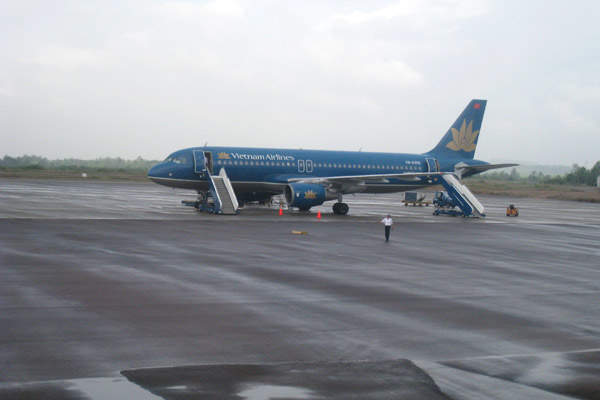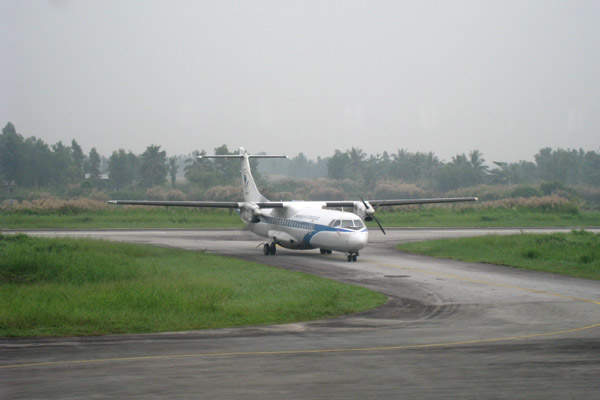Cam Ranh international airport is located in the town of Cam Ranh, Khanh Hoa province, Vietnam. The airport serves Nha Trang city, which is located 30km from it. The airport is spread over an area of 750ha. The owner and operator of the airport is the Government of Vietnam.
The airport was previously operated by the name Cam Ranh Air Base by the US Air force. Cam Ranh Air Base was established in 1967. The US Air Force built the air base as one of the several air bases of the South Vietnamese Air Force during the Vietnam War. The air base was handed over to the government of South Vietnam in 1972 but North Vietnam captured the base in 1975. The airport was used by the Russian Air Force during 1979 to 2002.
The Cam Ranh airport began its commercial operations after undergoing a major reconstruction in 2004. The airport was again upgraded in 2007 and was raised to international standards. Following an expansion in 2009, the Cam Ranh airport was finally inaugurated as an international airport on 12 December 2009.
The Ministry of Transport, Vietnam, designed an outline zoning plan, which includes the development of ten airports in Vietnam as international airports. The Cam Ranh international airport is one among them.
The airport recorded 274,314 passengers in 2004, but passenger numbers rose robustly over time and the airport is anticipated to handle 1.5 million passengers in 2010 and 4 million by 2015.
Master plan
The Government of Vietnam approved a ‘Transport Development Master Plan’ for developments up to 2020 and vision until 2030. The master plan includes the development of Cam Ranh international airport and envisions it to be handling both domestic and international flights and capable of accommodating B777s. A total amount of VND10.5tn ($590m) has been approved for the upgrade of the airport according to the approved masterplan.
Of this, about VND3.4tn ($184m) is planned to be invested in the upgrade of the airport until 2020 and the remaining amount will be invested for the developments from 2020 to 2030.
The master plan envisages various developments at the airport by 2020. The airport is planned to be able to capacitate around 5.5 million passengers and handle 100,000t of cargo. There will be 32 aircraft parking spaces and new facilities for providing training to pilots and mechanics are planned to be constructed in an area of 35,000m². An office area of 4,800m² is planned to be constructed along with a 2,000m² hangar. A new 3,048m×45m runway is also planned to be added by 2020. By 2030, the airport is planned to handle eight million passengers and transport 200,000t of cargo. Additional four aircraft parking spaces are planned to be constructed. The existing runway at the airport is also planned to be upgraded. At any given time, the airport will be able to handle 37 aircraft by 2030.
Expansion
In July 2009, the Deputy Prime Minister of Vietnam approved a decision, which included the upgrade of Cam Ranh airport to international standards. The expansion is aimed at developing the airport to meet the International Civil Aviation Organization (ICAO) standards and also make it a first-class military airfield. The upgrade is estimated to cost VND10.5tn ($590m). Funding for the upgrade will come from the state budget and private sources.
The expansion was partially completed and the airport opened with international status in December 2009. A new terminal with an area of 14,000m² was built at the airport at a cost of VND200bn ($10.8m).
Terminal features
The new terminal is spread over 14,000m² and has cost VND200bn ($10.8m) to build. The old terminal at the airport was capable of handling only 300 passengers per hour. The new terminal can accommodate 800 passengers per hour during peak times. The new terminal is a two-storey building and features waiting areas for both business and economy class passengers, canteen, registration areas and a souvenir shop.
Runway
Cam Ranh international airport features a single runway (02/20). It is considered to be the longest runway in Vietnam. The runway is 3,048m (10,000ft) long, 46m (150ft) wide and concrete surfaced.






